In last week’s post, we shared photographs of four species native to San Luis Obispo County and asked you to identify them. Today’s post reveals all four mystery species and shares information about each one.
Wildlife Spotlight: Mystery species #1
Common salp (Salpa fusiformis)
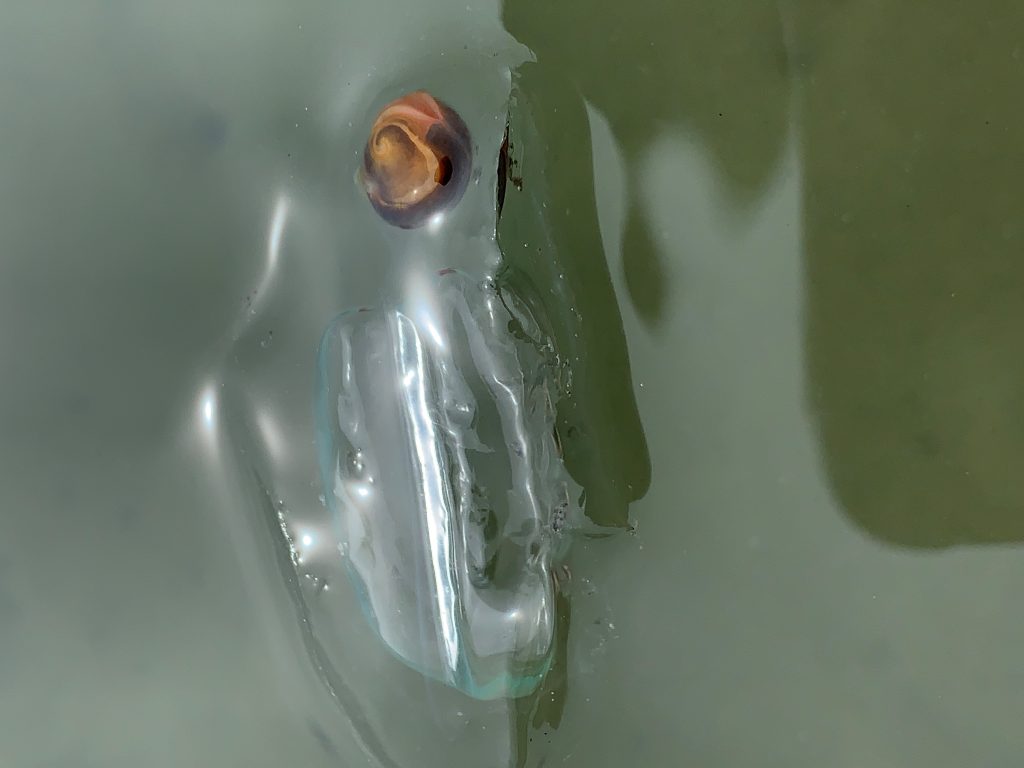
These ethereal-looking creatures are sometimes mistaken for jellyfish, but they are much more complex. In fact, they are more closely related to humans than they are to jellies.
This is because, as larvae, salps have a simple backbone called a notochord, which is composed of a tissue similar to cartilage. Though the notochord all but disappears when salps reach adulthood, this rudimentary backbone puts them in the Chordata phylum, a taxonomic category that includes all mammals, reptiles, and birds. Jellyfish are in the Cnidaria phylum, which includes coral and anemones.
This video shows a group of common salps swarming as they feed on plankton.
Salps go through several life stages. They start out solitary and then link together into long chains, like this.
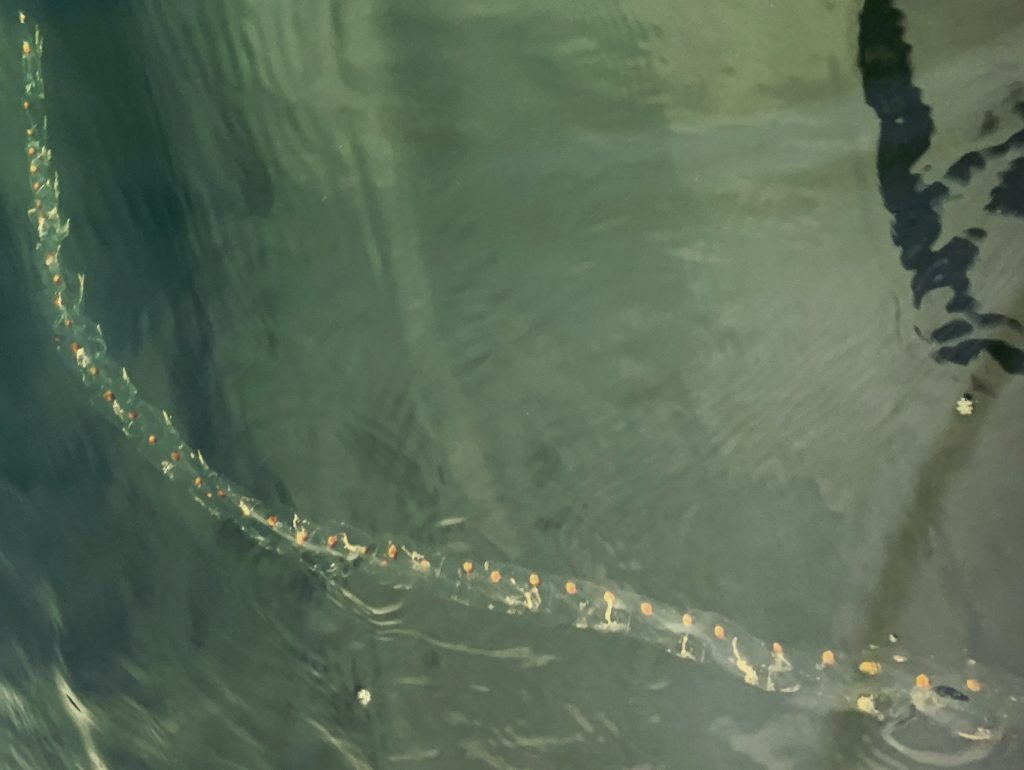
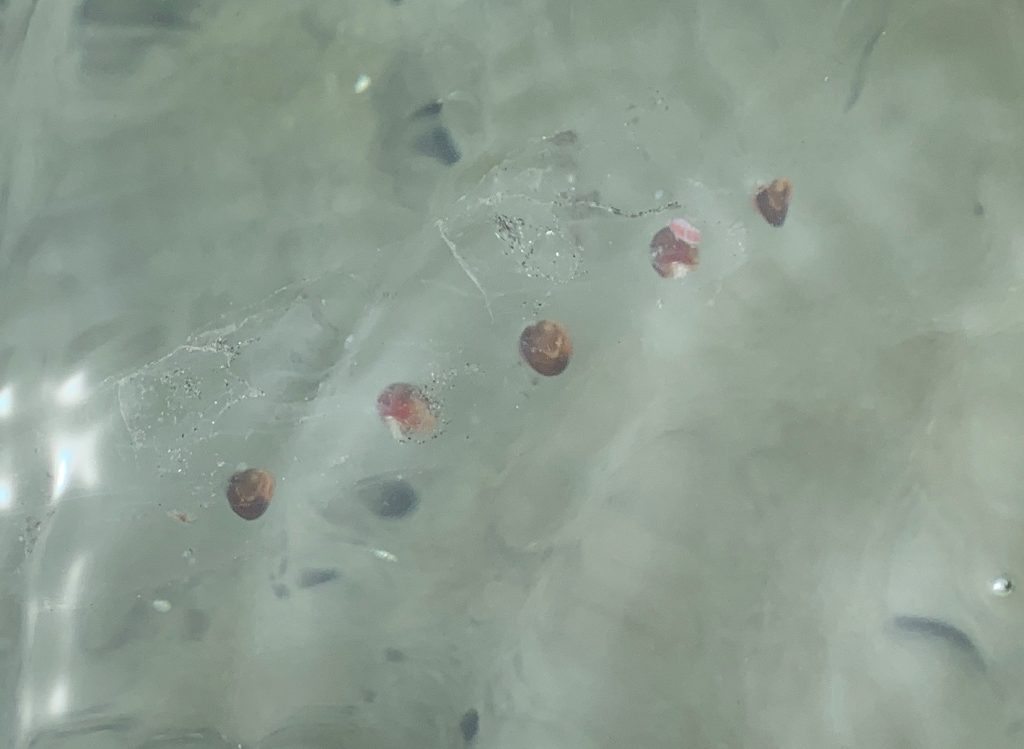
Learn more about common salps.
Wildlife Spotlight: Mystery species #2
Caddisfly larva (order Trichoptera) in its case
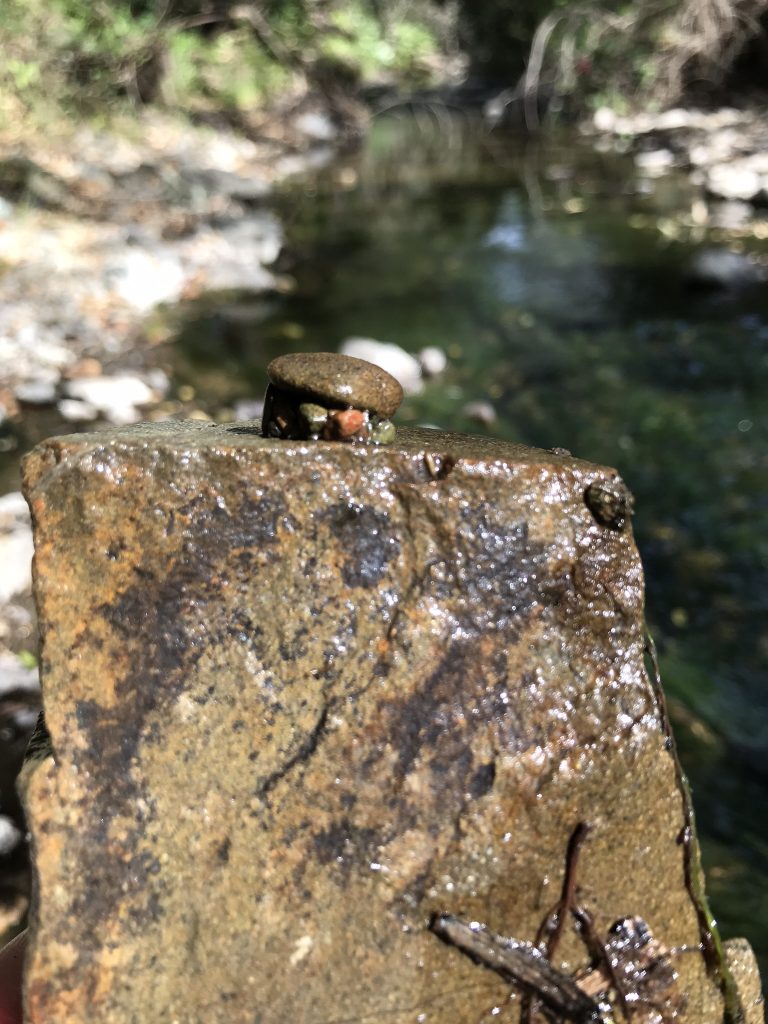
Caddisfly larvae are sensitive to pollution and require clean, cool water in order to survive. When we find specimens like this one in the creeks that lead to the Morro Bay estuary, it’s a good sign for the quality of the water.
Caddisflies spend one to two years in the creek as larvae. Their bodies are soft, so they build protective cases out of pebbles, sand, and other materials to protect themselves. This video from the Public Broadcasting Network shows this exacting process.
More information about caddisfliess and caddisfly larvae.
Wildlife Spotlight: Mystery species #3
Pale Swallowtail Butterfly (Papilio eurymedon)
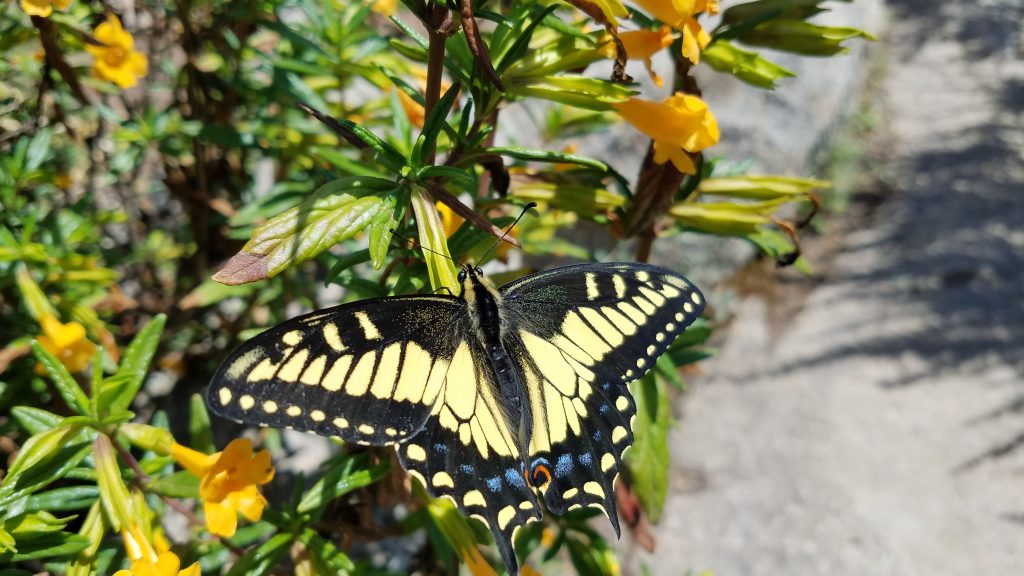
The pale swallowtail butterfly is relatively common throughout the West Coast. They can be found in open woodlands, especially near water. After mating, females lay their eggs one by one on local native plants including buckbrush (Ceanothus cuneatus), which grows in the mixed chaparral plant community.
California coffeeberry and other native plants host pale swallowtail caterpillars and pupae, and provide nectar for adult butterflies. Watch this video of a pale swallowtail butterfly caterpillar becoming a pupa.
You are most likely to see adult pale swallowtails between April and July.
Wildlife Spotlight: Mystery species #4
Toe-biter or giant water bug (genus Abedus)
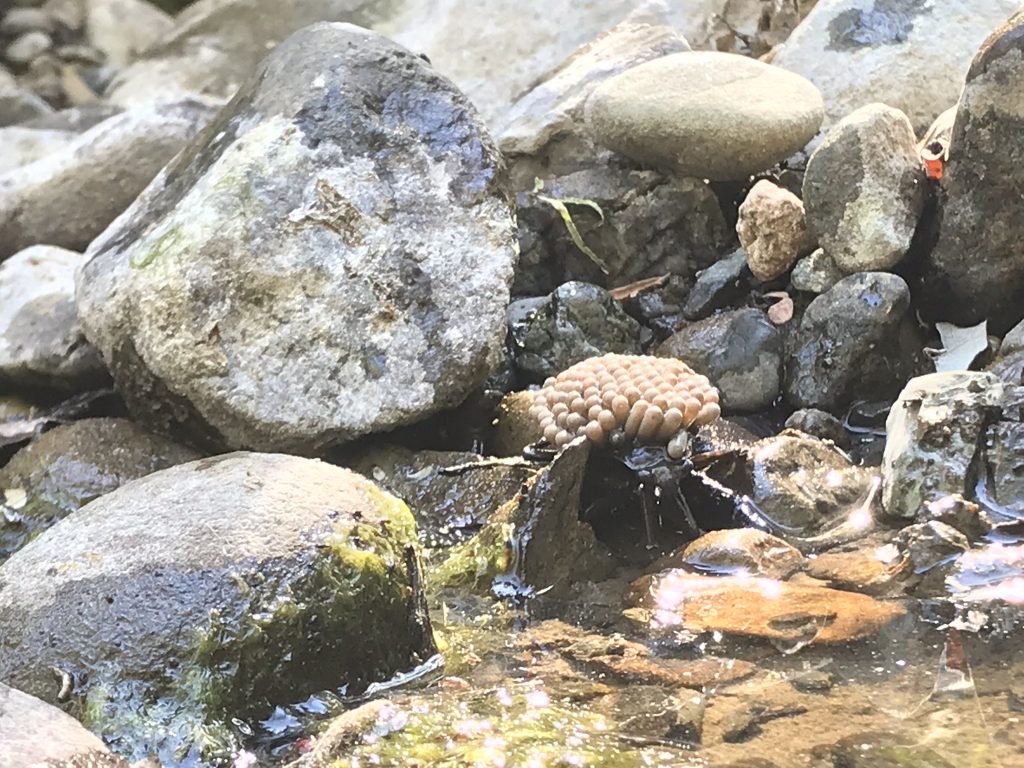
In the picture above, find the rock with the green algae, then look to the right and slightly behind it. The cluster of cream-colored tic-tac shaped forms that you see is a group of eggs affixed to the back of a male toe-biter. Brooding the eggs on the male’s back helps them stay hydrated and makes it more difficult for predators to eat them. This video shows how toe-biter eggs hatching.
Toe-biters are ambush-style hunters. They stay very still, then they strike and stab their prey with their rostrum (or proboscis). The rostrum injects saliva into the prey, immobilizing and dissolving it. The toe-biter sucks up the resulting liquid. This video shows the toe-biter’s hunting process.
And yes, in case you are wondering, they have been reported to bite toes. While the bite hurts, it is not dangerous to humans.
Though toe-biters are ferocious predators, they also become prey for fish, frogs, and other aquatic species. Like the other aquatic bugs in our creeks, they are an important part of the food web. Find more information about toe-biters in The Artful Amoeba, a blog run by Scientific American.
Subscribe to our weekly blog to have posts like this delivered to your inbox each week.
Help us protect and restore the Morro Bay estuary!
- Donate to the Estuary Program today and support our work in the field, the lab, and beyond.
The Estuary Program is a 501(c)3 nonprofit. We depend on funding from grants and generous donors to continue our work. - Support us by purchasing estuary-themed gear from ESTERO. This locally owned and operated company donates 20% of proceeds from its Estuary clothing line and 100% of Estuary decal proceeds to the Estuary Program. Thank you, ESTERO!
- Purchase items from the the Estuary Program’s store on Zazzle. Zazzle prints and ships your items, and the Estuary Program receives 10% of the proceeds. Choose from mugs, hats, t-shirts, and even fanny packs (they’re back!) with our fun Estuary Octopus design, our classic Estuary Program logo, or our Mutts for the Bay logo.